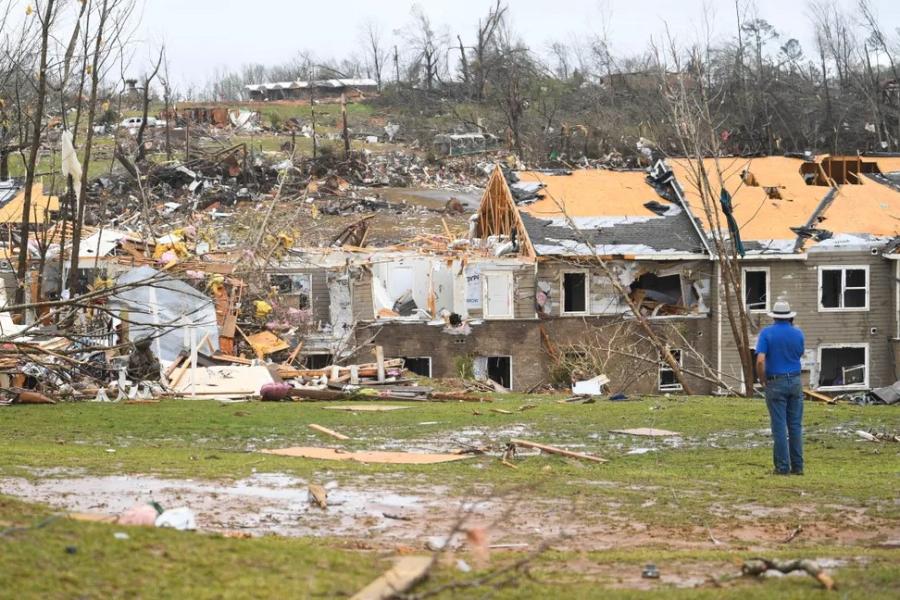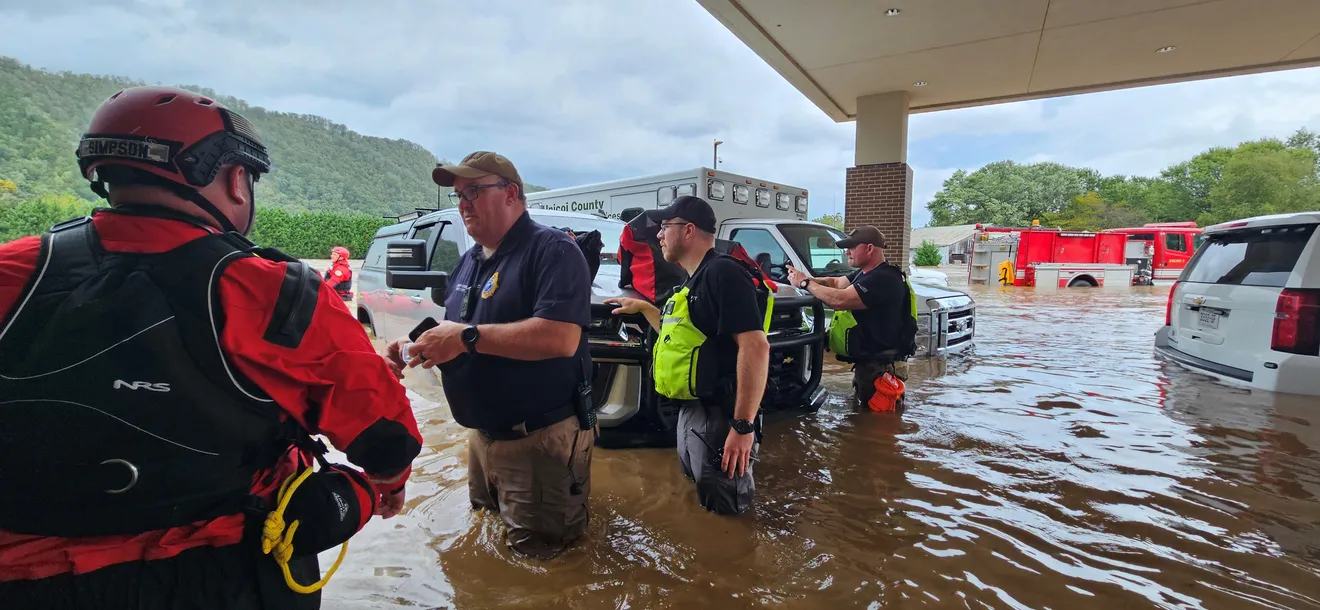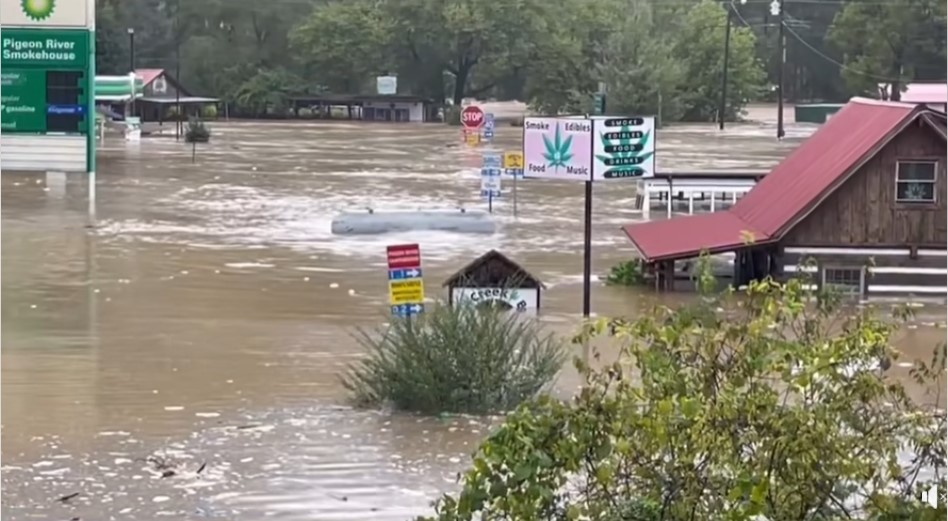NLC highlights efforts to determine future of FEMA, disaster mitigation and recovery

By KATE COIL
TT&C Assistant Editor
Leadership with the National League of Cities (NLC) are working with the White House and other officials in Washington on proposed reforms to the Federal Emergency Management Agency (FEMA), especially as municipalities across Tennessee are still working to recover from events like Hurricane Helene and the April tornadoes and flooding.
Yucel Ors, NLC Legislative Director for Public Safety, detailed in a quarterly memo both administration goals and currently proposed legislation aimed at the federal government’s role in disaster recovery and mitigation.
“NLC is actively engaging with Congress to ensure these reforms reflect local government needs,” Ors said. “We are advocating for flexibility, funding support, and required local input in disaster classification, housing programs, and infrastructure recovery. While some proposals offer welcome efficiency and modernization, others risk increasing burdens on municipalities without the tools to meet new responsibilities. We will continue to monitor developments and provide updates as the legislative process moves forward.”
While only Congress can fully eliminate FEMA, the executive branch can restructure and reduce the agency in size. Both the White House and Congress have suggested different methods for accomplishing this.
ADMINISTRATION GOALS

According to Ors, the FEMA Review Council held its first May meeting in the White House to assess the agency’s effectiveness as well as proposed reforms under Executive Order 14180. He said Discussions were led by DHS Secretary Kristi Noem and included federal officials, governors, and one local representative—Mayor Jane Castor of Tampa.
The group is expected to make recommendations to the president by mid-November with the goal of either eliminating or restructuring the agency between the 2025 and 2026 hurricane seasons.
The May meeting emphasized decentralizing FEMA by:
- transitioning disaster responsibilities to states and localities,
- replacing long-term federal recovery efforts with a block grant model,
- adopting private sector tools and AI systems.
- shifting the agency to a support role,
- reducing bureaucracy, and
- streamlining funding
President Donald Trump in June stated he would like to eliminate FEMA by December during an Oval Office briefing.
“We want to wean off of FEMA, and we want to bring it down to the state level,” President Trump said. “A governor should be able to handle it, and frankly, if they can’t handle it, the aftermath, then maybe they shouldn’t be governor.”
U.S. Department of Homeland Security Secretary Kristi Noem also stated she intends to review all FEMA grants above $100,000.
"The president and I have had many, many discussions about this agency,” Noem said in May. “I want to be very clear. The President wants it eliminated as it currently exists. He wants a new agency."
Disaster declarations have taken longer to arrive since the new administration took office. For example, major disaster declarations for areas of Tennessee impacted by tornadoes from April 2-7, 2025 were forwarded to the White House by Gov. Bill Lee on April 22, 2025, but not approved by President Donald Trump until June 20. The first FEMA recovery centers were not opened in the state for these areas until June 30.

The administration also denied disaster requests in Washington, Arkansas, and West Virginia earlier this year as well as did not extend coverage for areas of North Carolina impacted by Hurricane Helene.
According to Pro Publica, May is the month FEMA typically opens applications for a variety of grants – including numerous programs many states rely on to both fund their own emergency management agencies as well as pass on funds to their most rural and low-income communities. However, these grants were not opened by the agency in May as typically scheduled.
In April, the agency also abruptly rescinded the Building Resilient Infrastructure and Communities (BRIC) program, drawing back hundreds of millions already pledged to local governments for disaster mitigation as well as withdrew a notice for states to apply for $600 million in flood mitigation grants. Additionally, the agency has lost some 2,000 permanent national and regional employees – about a third of its workforce – since the beginning of the year.
CONGRESSIONAL BILL

Also in May, the bipartisan staff from the House Transportation and Infrastructure Committee discussed with NLC membership draft of the FEMA Act of 2025.
Ors said the bill would restructure FEMA and many of its core programs, re-establishing it as a cabinet-level agency under the Department of Homeland Security, and replacing the present reimbursement model with project-based, fixed-cost grants for disaster recovery. States would be incentivized to invest more in disaster preparedness with how prepared an area was for a disaster tied into federal aid.
Under the new framework, FEMA would be required to disburse funds within 120 days of a disaster declaration. The bill also introduces a sliding federal cost-share ranging from 65 to 85%, tied to the implementation of local mitigation measures.
“While this could accelerate recovery and offer flexibility, provisions like raising the threshold for 'small disasters’ would shift more responsibility—and risk—to local governments,” Ors said. “Localities would be expected to manage recovery under simplified federal procedures, often without adequate resources or oversight. Other provisions streamline permitting and environmental reviews, expand eligibility for hazard mitigation funding, and create a universal individual assistance application, among other changes. However, many reforms could strain local capacity, especially in housing, data sharing, crisis response, and program implementation.”
Proposed improvements to individual assistance in the bill including implement a single, universal application for disaster assistance, mandate plain-language notices for survivors, allow greater flexibility for states to provide emergency housing, and remove restrictions discouraging private, charitable contributions.

Mitigation efforts proposed by the bill include allowing the preapproval of state mitigation projects through a peer-review process, clarifying building code flexibility, and supporting homeowner investment and resilience.
Other goals toward oversight and transparency including prohibiting political bias in disaster assistance, creating a public dashboard to track disaster funding, reviewing outdated rules and redundancies, and mandating federal reviews of disaster fraud risk, insurance coverage, public alert systems, and cost savings from the Act’s provisions.
The bill would also create a Recovery Task Force to close out unresolved disaster declarations, including those dating back to Hurricane Katrina.
OTHER ADVISORIES
In the meantime, FEMA has announced updates to several tools state and local emergency management agencies can use for disaster planning.
The Resilience Analysis and Planning Tool (RAPT), a free, web-based GIS resource designed to help emergency managers and community stakeholders assess local resilience to threats and hazards, was updated to include recent U.S. Census data and enhanced features including more than 100 pre-loaded data layers and a new County Overview dashboard for at-a-glance local insights.
The State Mitigation Planning Policy Guide was also updated to align with recent executive orders, notably removing requirements related to climate change and equity, reflecting the current Administration’s policy direction under Secretary Noem. These changes take effect immediately. The advisory also provides contact information for FEMA’s external affairs offices and links to mitigation planning resources.
There have also been updates to three National Flood Insurance Program (NFIP) guidance documents: the Flood Insurance Manual, the NFIP Claims Manual, and the Standard Flood Insurance Policy (SFIP) Commentary.
The revised manuals are designed to be clearer and easier to understand, enhancing customer service and support for insurance professionals. Importantly, the updates do not alter flood insurance coverage or the legal terms of the SFIP. The updated guidance applies to policies and claims starting with the 2025 hurricane season and will take effect Oct. 1, 2025.

